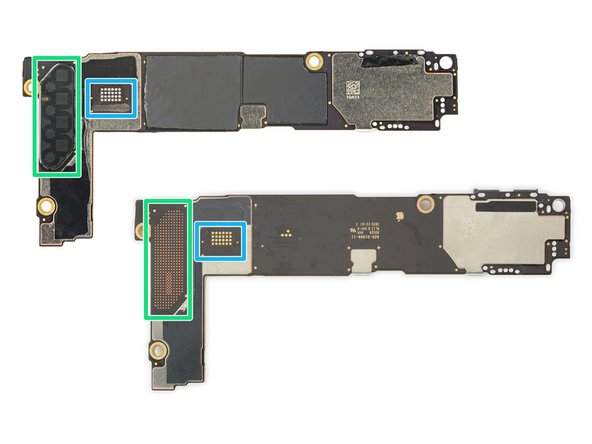crwdns2935425:010crwdne2935425:0






-
Let's check out these logic board sandwiches. For reference, the US version is on top in these images, EU below. (Don't read into it—that's just how the chips fell.)
-
First, the similarities—the US and EU upper sections are identical and have the same spread of chips on both sides.
-
The lower sections are a bit more interesting. (Note: SIM readers are the same, but we only desoldered it from the US version.) Here's where the US board starts accommodating all that mmWave tech:
-
An extra socket, which connects to the front mmWave antenna mentioned in the previous step
-
A Murata 1XR-482 mmWave front-end module
-
A Qualcomm SMR526 intermediate frequency IC, working in conjunction with Qualcomm's SDX55M 5G modem
-
One more mmWave antenna right on the board
-
A flex cable soldered to this patch, which connects to the side edge mmWave antenna
crwdns2944171:0crwdnd2944171:0crwdnd2944171:0crwdnd2944171:0crwdne2944171:0